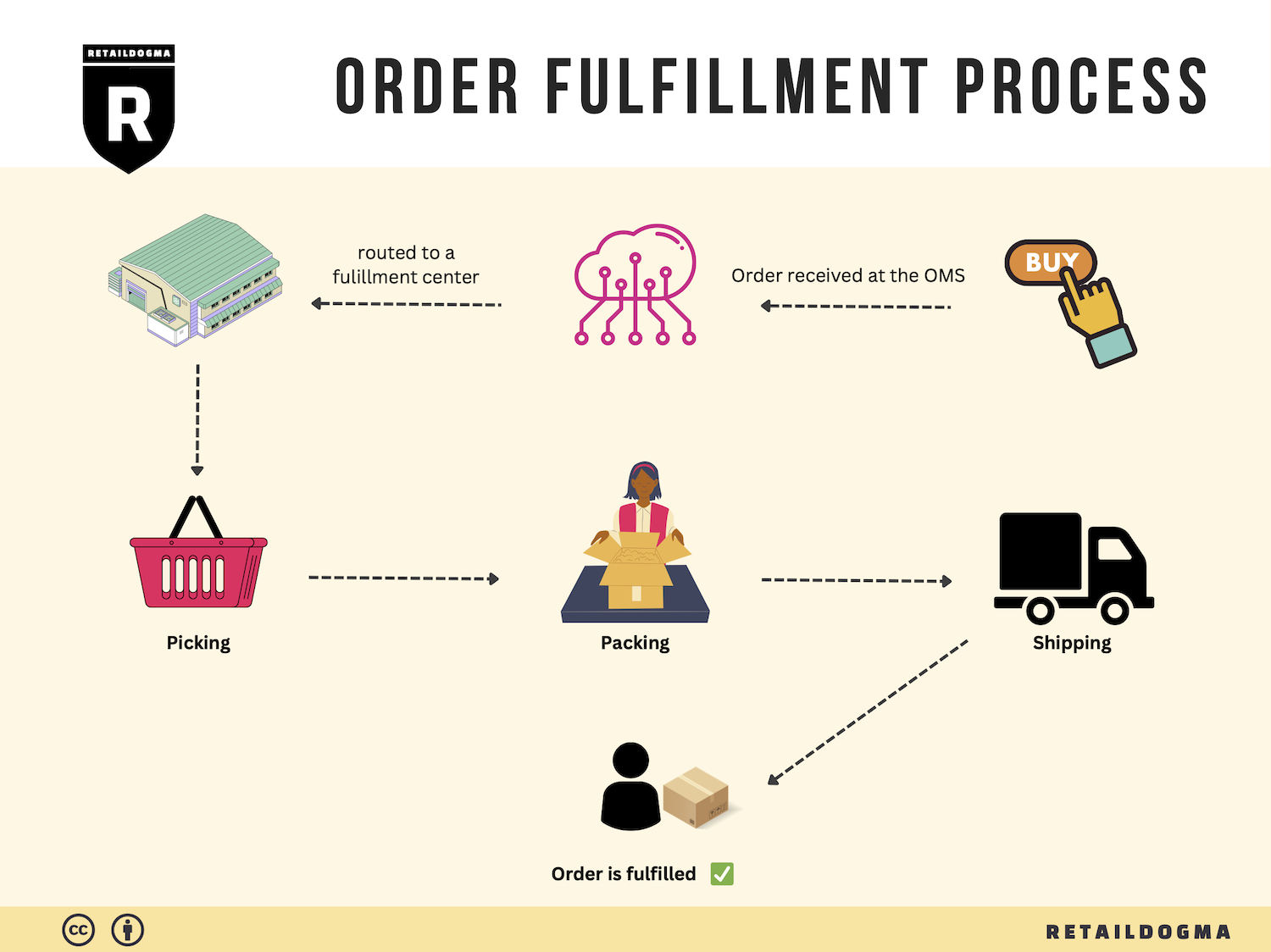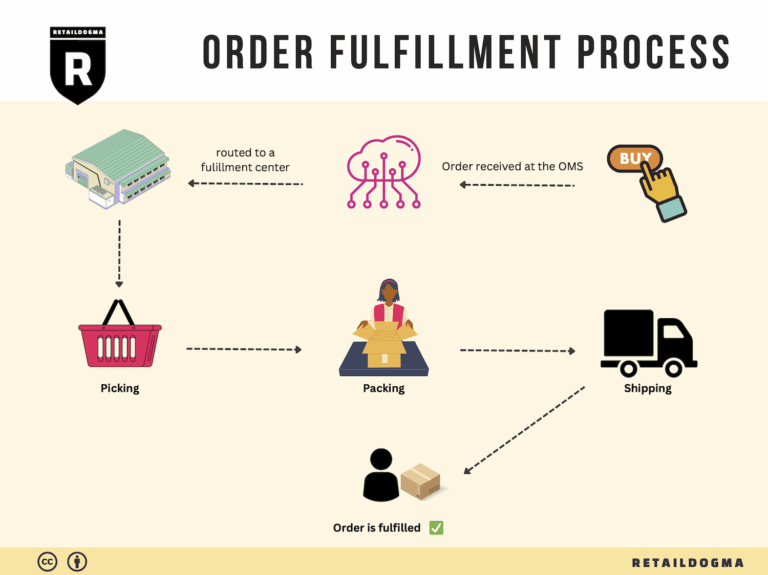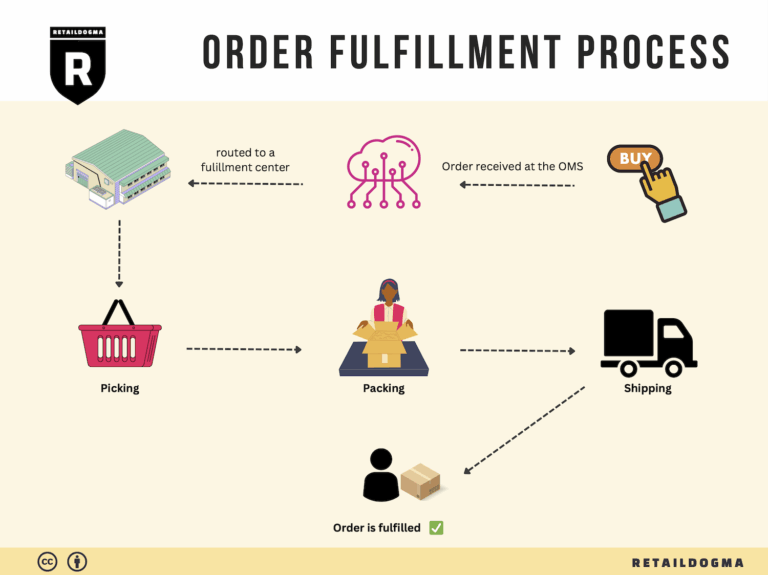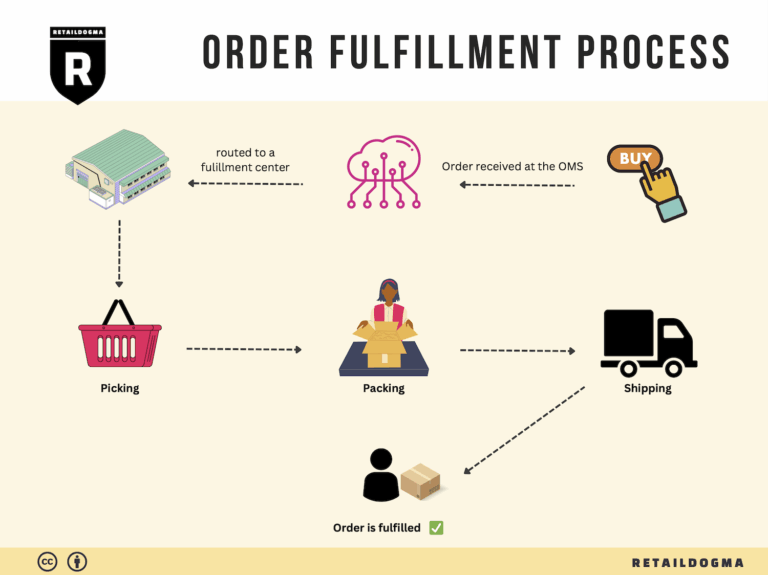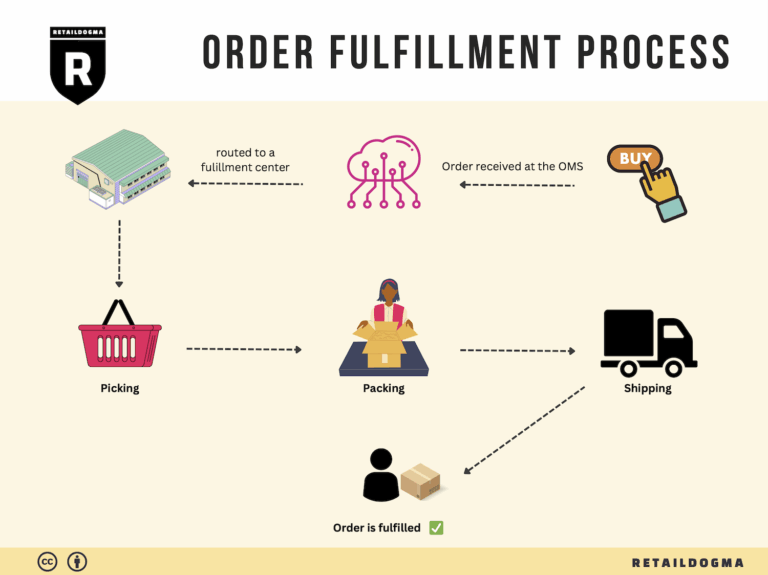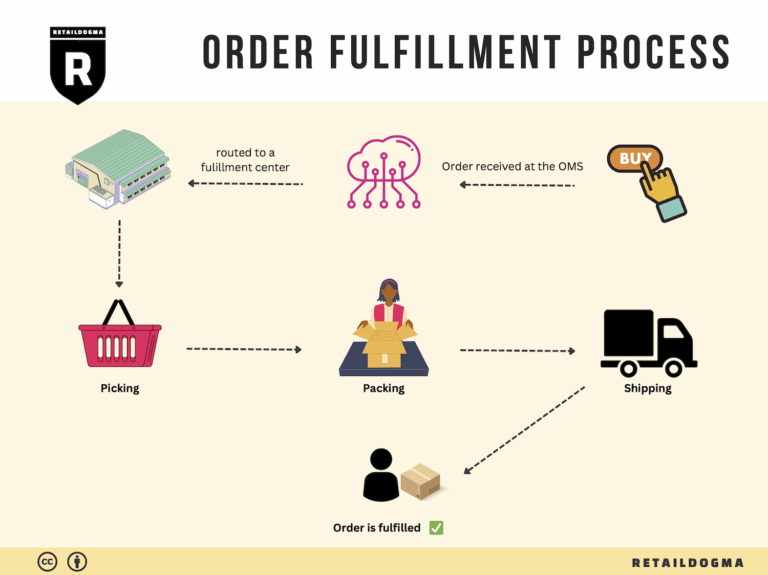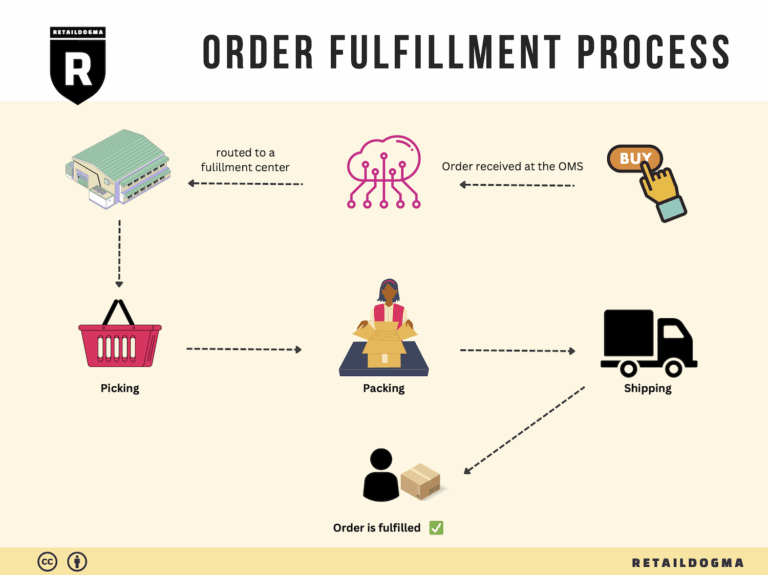Ecommerce Fulfillment Services: The Ultimate Guide (2025)
What is E-commerce Fulfillment? An Introduction for Growing Businesses
Understanding E-commerce Fulfillment: A Key to Scaling Your Business
As your online business grows, the excitement of increased sales can quickly turn into the stress of managing packing and shipping orders. This is a common pain point for many e-commerce entrepreneurs who find themselves overwhelmed by the logistics of getting products to customers promptly and efficiently. Fulfillment, in its simplest form, refers to the entire process of receiving, processing, and delivering orders to customers. It encompasses everything from inventory management to shipping logistics, and it plays a critical role in customer satisfaction and retention.
In this guide, we will explore various e-commerce fulfillment models to help you determine the best approach for your business. We’ll delve into popular options such as Third-Party Logistics (3PL) and Fulfillment by Amazon (FBA), each of which offers unique advantages and challenges. Understanding these models will allow you to make informed decisions that align with your business goals.
Additionally, we will outline the core services typically involved in e-commerce fulfillment. These services include inventory storage, order processing, packing, shipping, and returns management. Knowing what services are essential will help you evaluate potential fulfillment partners more effectively.
Choosing the right fulfillment partner is crucial for your business’s growth and success. This guide will provide you with practical insights on what to look for in a partner, including their technology capabilities, customer service standards, and scalability options. You’ll learn how to assess partners based on your specific needs, ensuring that you select one that can grow alongside your business.
Finally, we will discuss pricing structures in the fulfillment landscape. Understanding how fulfillment partners charge for their services—whether through flat fees, per-order fees, or a combination of both—will empower you to budget effectively and avoid unexpected costs.
By the end of this guide, our goal is to equip you with the knowledge and tools necessary to make smart logistics decisions. With the right fulfillment strategy, you can streamline your operations, enhance customer experiences, and ultimately scale your e-commerce business with confidence.
What You’ll Learn In This Guide
- What is E-commerce Fulfillment? An Introduction for Growing Businesses
- The Order Fulfillment Process: From ‘Buy’ Button to Customer’s Door
- Comparing Fulfillment Models: In-House vs. 3PL vs. Dropshipping
- A Deep Dive into Amazon FBA: Pros, Cons, and Who It’s For
- Core Services Offered by Fulfillment Centers
- How to Choose a Fulfillment Partner: A 6-Point Checklist
- Understanding Fulfillment Pricing: A Breakdown of Common Fees
- Frequently Asked Questions (FAQs) about Fulfillment
- Conclusion: Is Outsourcing Fulfillment the Right Move for Your Business?
- Important Disclaimer
The Order Fulfillment Process: From ‘Buy’ Button to Customer’s Door
1. Receiving Inventory
The order fulfillment process begins with receiving inventory from suppliers or manufacturers. This step is crucial because it sets the foundation for the entire supply chain. Once inventory arrives at your facility, it needs to be checked for accuracy against purchase orders. This includes verifying quantities, conditions, and any discrepancies that might arise.
A key term associated with this step is SKU (Stock Keeping Unit), which is a unique identifier for each product. Using SKUs during the receiving process helps in tracking inventory efficiently and ensures that all items are accounted for. Proper receiving processes reduce errors, minimize returns, and ensure that the inventory is ready for the next steps in the fulfillment process.
2. Warehouse Storage
After inventory is received, the next step is warehouse storage. This involves strategically placing products within your warehouse or fulfillment center to optimize space and improve accessibility. Effective storage solutions can significantly enhance operational efficiency, reducing the time it takes to locate and pick items for orders.
During this phase, it’s essential to categorize and label products accurately. Using terms like bin locations can help in organizing inventory systematically. This allows for a more streamlined picking process later on. Proper warehouse storage is vital not only for space management but also for maintaining product integrity and ensuring that stock levels are easy to monitor.
3. Order Picking
Once a customer places an order, the next step is order picking. This is the process of retrieving the correct items from storage to fulfill the order. Efficiency in picking is critical, as it directly impacts order accuracy and fulfillment speed.
A key term related to this step is pick lists, which are documents or digital formats that outline the items and quantities needed for each order. Utilizing technology, such as barcode scanners or pick-to-light systems, can enhance the picking process, reduce errors, and increase productivity. Efficient order picking not only improves customer satisfaction but also minimizes labor costs, making it a crucial step in the fulfillment process.
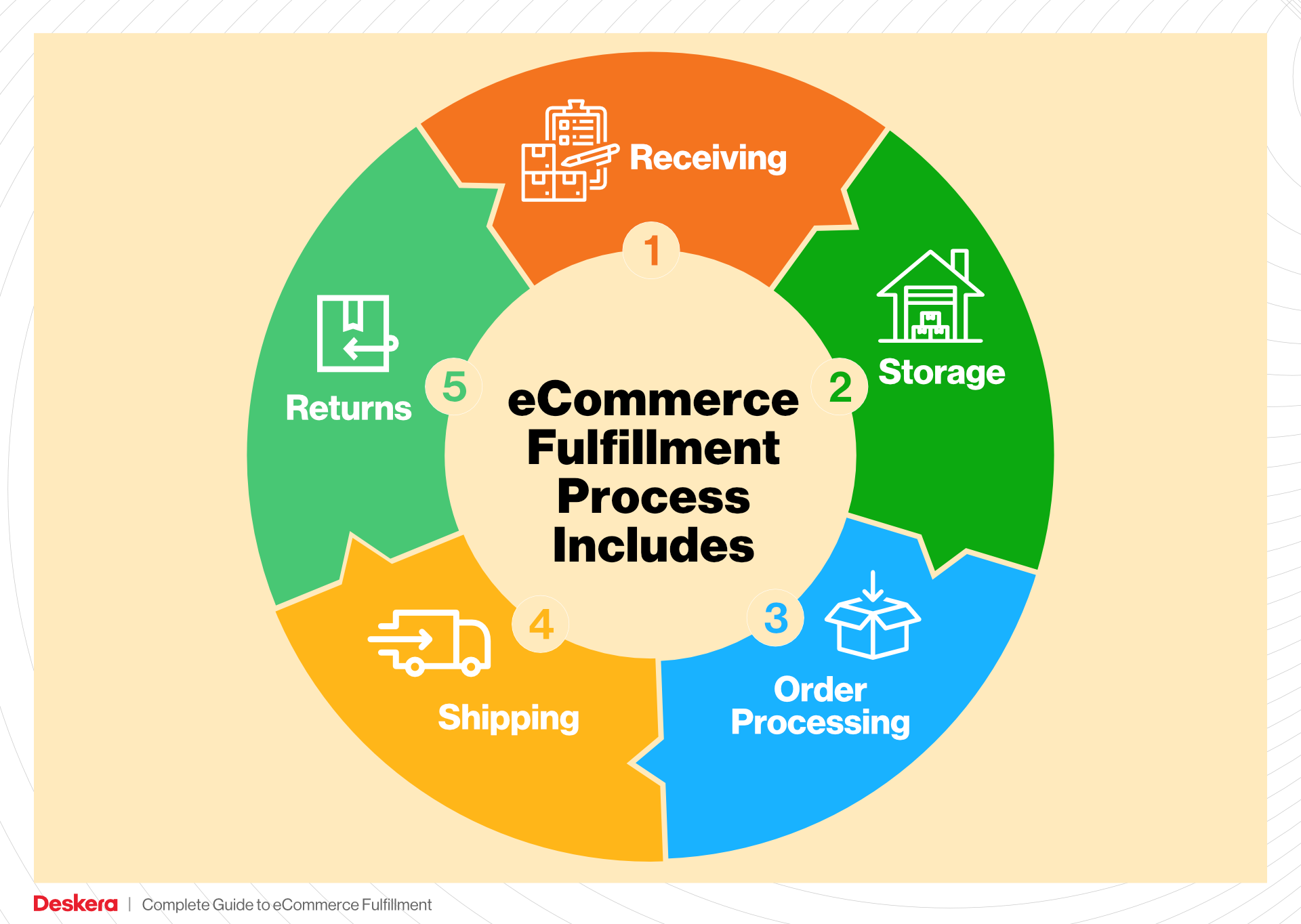
4. Order Packing
Once the items are picked, they proceed to the packing stage. This is where products are securely packaged for shipment, ensuring they arrive at the customer’s location in excellent condition. The packing process involves selecting appropriate packaging materials, labeling shipments, and including any necessary documentation, such as packing slips or return instructions.
A critical term in this step is pack stations, which are designated areas in the warehouse specifically designed for packing orders. An efficient packing process is vital for minimizing damages during transit and can significantly affect the overall customer experience. Properly packed orders help maintain brand reputation and reduce costs associated with returns due to damaged goods.
5. Shipping & Delivery
The final step in the order fulfillment process is shipping and delivery. This involves selecting the appropriate carrier, preparing shipping labels, and dispatching orders to customers. Timely and accurate shipping is essential for customer satisfaction and retention.
Key terms associated with this phase include last-mile delivery, which refers to the final leg of the delivery process where the package reaches the customer’s doorstep. Efficient shipping strategies, such as utilizing multiple carriers or optimizing delivery routes, can enhance delivery speed and reduce costs. A well-executed shipping and delivery process not only fulfills customer expectations but can also drive repeat business and brand loyalty.
By understanding and optimizing each of these five steps in the order fulfillment process, e-commerce businesses can enhance their operational efficiency, improve customer satisfaction, and ultimately scale their sales and logistics effectively.
Comparing Fulfillment Models: In-House vs. 3PL vs. Dropshipping
Fulfillment Model Comparison Table
| Model | Who Handles Inventory | Best For (Business Stage) | Key Advantage | Key Disadvantage |
|---|---|---|---|---|
| In-House Fulfillment | Business (own warehouse) | Established businesses | Full control over inventory and processes | High upfront costs and operational complexity |
| Third-Party Logistics (3PL) | Third-party provider | Growth-stage businesses | Scalability and reduced operational burden | Less control over inventory and processes |
| Dropshipping | Supplier | Startups and small businesses | Low startup costs and no inventory risk | Lower profit margins and potential quality issues |
In-House Fulfillment
In-house fulfillment involves managing your own inventory and logistics operations within your organization. This model is typically best suited for established businesses that have the resources and operational capacity to handle order processing, warehousing, packing, and shipping. One of the primary advantages of in-house fulfillment is the complete control it offers over inventory management and customer experience. Businesses can tailor their processes to their specific needs, ensuring consistency in quality and service. However, this model also comes with significant disadvantages, such as high upfront costs associated with warehousing, staffing, and technology investments. Additionally, the complexity of managing logistics can strain resources, especially during peak seasons or unexpected demand surges. Businesses must also consider the ongoing operational challenges, including maintaining adequate inventory levels and managing returns effectively.
Third-Party Logistics (3PL)
Third-party logistics (3PL) involves outsourcing fulfillment operations to specialized logistics providers. This model is particularly beneficial for growth-stage businesses that are scaling quickly and may not yet have the infrastructure to manage increased order volumes. The key advantage of utilizing a 3PL provider is the scalability it offers. Businesses can easily adjust their logistics operations based on demand without needing to invest heavily in warehousing or staffing. Moreover, 3PLs often have established relationships with carriers and can negotiate better shipping rates, which can lead to cost savings. However, the downside of relying on a 3PL is the potential loss of control over inventory and fulfillment processes. Businesses may find it challenging to maintain quality and consistency when relying on an external partner. Additionally, integrating technology systems between the business and the 3PL can be complex, requiring careful planning and execution to ensure seamless operations.
Dropshipping
Dropshipping is a fulfillment model where the retailer does not hold inventory but instead relies on suppliers to ship products directly to customers. This model is particularly attractive for startups and small businesses with limited capital, as it eliminates the need for upfront inventory investment. The primary advantage of dropshipping is its low startup costs and the ability to offer a wide range of products without the risk associated with unsold inventory. Entrepreneurs can focus on marketing and customer acquisition rather than logistics and warehousing. However, dropshipping also comes with significant disadvantages. The profit margins are typically lower compared to other fulfillment models, as retailers rely on suppliers to handle fulfillment and may face higher per-item costs. Additionally, quality control can be a concern, as businesses have limited visibility over the supplier’s processes, which can lead to inconsistencies in product quality and shipping times. This lack of control can impact customer satisfaction and brand reputation, making it critical for businesses to vet suppliers thoroughly.
Conclusion
Choosing the right fulfillment model is a crucial decision for e-commerce business owners, operations managers, and entrepreneurs aiming to scale their logistics and sales effectively. Each model—In-House Fulfillment, Third-Party Logistics, and Dropshipping—offers distinct advantages and disadvantages that can impact operational efficiency, customer experience, and overall profitability. By carefully evaluating their specific business needs, growth stages, and available resources, decision-makers can select the fulfillment strategy that best aligns with their long-term objectives and market demands.
A Deep Dive into Amazon FBA: Pros, Cons, and Who It’s For
Understanding Fulfillment by Amazon (FBA)
Fulfillment by Amazon (FBA) is a service offered by Amazon that allows e-commerce sellers to store their products in Amazon’s fulfillment centers. Amazon takes care of storage, packaging, and shipping of these products to customers, as well as handling customer service and returns. This service is particularly appealing to sellers looking to scale their operations without the need for extensive logistics management.
When a customer places an order for a product that is fulfilled by Amazon, the item is picked from the seller’s inventory stored in an Amazon warehouse, packed, and shipped directly to the customer. The seller retains ownership of the product until it is sold, allowing them to focus on marketing and selling while Amazon handles the logistics.
How FBA Works
-
Setup: Sellers create an Amazon seller account and choose the FBA option. They then prepare their products according to Amazon’s guidelines and ship them to Amazon’s fulfillment centers.
-
Storage: Once received, Amazon stores the products in their warehouses. Sellers can monitor their inventory levels and sales performance through their Amazon Seller Central dashboard.
-
Order Fulfillment: When a customer orders a product, Amazon’s system automatically identifies the nearest fulfillment center with the item in stock, picks the item, and packages it for shipping.
-
Shipping: Amazon ships the product directly to the customer, typically offering fast and reliable delivery options, including same-day or two-day shipping for Prime members.
-
Customer Service and Returns: Amazon also handles customer service inquiries related to the fulfillment of the product, as well as processing returns, which can significantly reduce the workload for sellers.
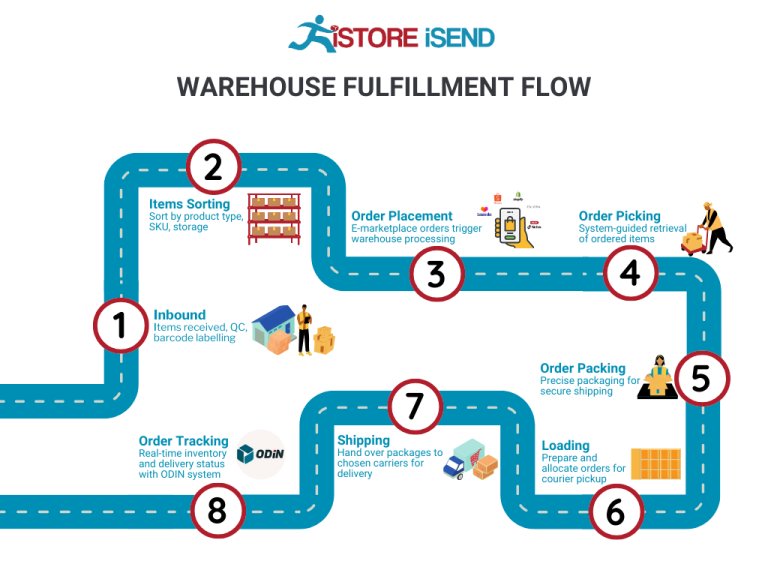
Pros of Using FBA
-
Prime Eligibility: Products fulfilled by Amazon are eligible for Amazon Prime, which can significantly increase visibility and sales. Prime members tend to have higher conversion rates due to the benefits of fast, free shipping.
-
Customer Trust: Leveraging Amazon’s brand recognition and customer service can enhance trust. Buyers are often more willing to purchase products fulfilled by Amazon, knowing that they can rely on Amazon’s return policies and customer support.
-
Multi-Channel Fulfillment: FBA allows sellers to fulfill orders from other sales channels (like their own website or eBay) using Amazon’s logistics network. This can streamline operations, enabling sellers to maintain a consistent inventory and shipping process across different platforms.
-
Scalability: FBA allows sellers to scale their businesses without needing to invest heavily in warehousing or logistics. As sales increase, sellers can send more inventory to Amazon without worrying about storage space.
-
Time Savings: With Amazon handling storage, packing, and shipping, sellers can focus on growing their business rather than managing the complexities of logistics.
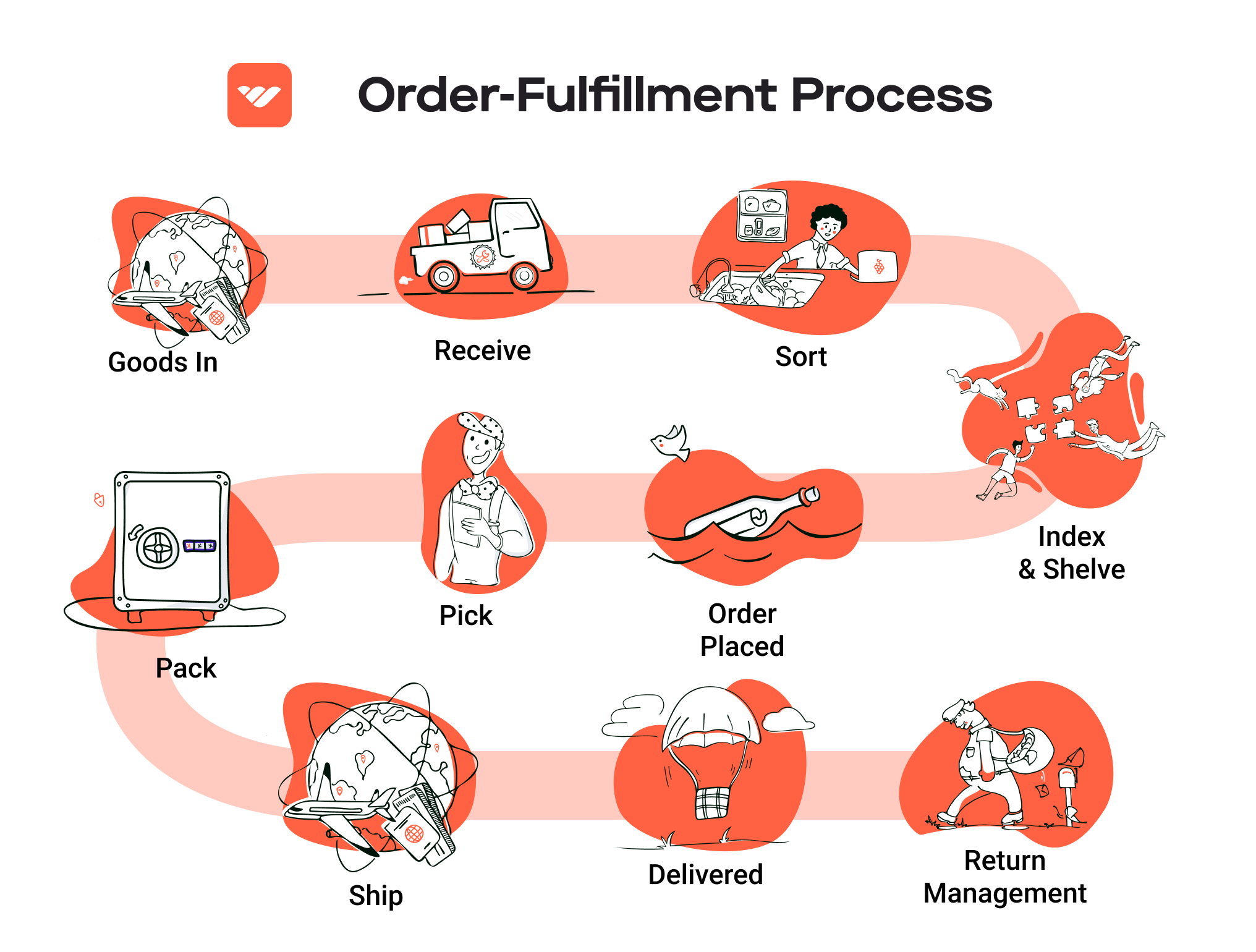
Cons of Using FBA
-
High Fees: While FBA offers many benefits, it comes with significant costs. Sellers must pay storage fees for the products held in Amazon warehouses and fulfillment fees for each order. These fees can add up quickly, especially for slow-moving inventory.
-
Strict Inventory Rules: Amazon has stringent guidelines regarding inventory management. Sellers must ensure that their products are compliant with Amazon’s requirements, or they risk having their inventory removed or their accounts suspended.
-
Commingling Risks: When using FBA, sellers’ products may be commingled with those of other sellers. This can lead to issues where a customer might receive a different item than what they ordered, which can negatively affect seller ratings and lead to returns.
-
Loss of Control: By outsourcing fulfillment to Amazon, sellers may feel they lose some control over the customer experience, particularly regarding packaging and branding.
-
Limited Customization: Amazon’s fulfillment process does not allow for much customization in terms of packaging or shipping options. This can be a disadvantage for brands looking to create a unique customer experience.
Who is FBA Best For?
Fulfillment by Amazon is best suited for:
-
Small to Medium-Sized Businesses: Sellers who may not have the resources to manage logistics effectively can benefit from Amazon’s robust infrastructure.
-
Brands Looking to Scale: Businesses aiming for rapid growth can leverage FBA to handle increased sales volume without the need for additional logistics staff or infrastructure.
-
E-commerce Entrepreneurs: New sellers who want to enter the marketplace with minimal upfront investment in logistics can use FBA to simplify the process.
-
Multi-Channel Sellers: Brands that sell on various platforms can streamline their fulfillment by using Amazon’s logistics for all their orders.
-
Businesses with Seasonal Products: Sellers with seasonal or fluctuating demand can benefit from FBA’s flexibility, allowing them to scale inventory up or down without significant overhead costs.
In conclusion, FBA offers a powerful solution for e-commerce businesses looking to streamline their operations and leverage Amazon’s extensive network. While it comes with certain challenges, the benefits often outweigh the drawbacks for many sellers, particularly those looking to grow their brand and reach a wider audience. By understanding how FBA works and evaluating its pros and cons, businesses can make informed decisions about whether to integrate it into their fulfillment strategy.
Core Services Offered by Fulfillment Centers
Inventory Management & Warehousing
Inventory management and warehousing are foundational services provided by fulfillment centers. This involves not only storing products but also overseeing stock levels, tracking inventory movements, and ensuring accurate records. Fulfillment centers utilize sophisticated inventory management systems that integrate with e-commerce platforms, allowing for real-time updates on stock availability.
Benefits:
– Improved Accuracy: Advanced inventory management reduces the chances of stockouts and overstock situations, ensuring that businesses can meet customer demand without tying up capital in excess inventory.
– Space Optimization: Fulfillment centers are designed to maximize storage efficiency, which can free up valuable space for e-commerce businesses that may otherwise need to lease additional warehousing.
– Scalability: As businesses grow, fulfillment centers can easily adjust to increased inventory levels and complexity, allowing for seamless scaling without the need for significant investment in physical infrastructure.
– Data Insights: Regular inventory reporting helps businesses make informed decisions regarding purchasing, sales trends, and product lifecycle management.
Pick and Pack Services
Pick and pack services involve the process of selecting items from inventory (picking) and preparing them for shipment (packing). Fulfillment centers employ trained staff and automated systems to efficiently handle this process, ensuring that orders are fulfilled accurately and promptly.
Benefits:
– Efficiency and Speed: Fulfillment centers use optimized workflows and technology to streamline the pick and pack process, which results in faster order fulfillment. This is crucial for maintaining competitive shipping times in the e-commerce landscape.
– Error Reduction: By utilizing barcodes and scanning technology, fulfillment centers can minimize picking errors, leading to higher customer satisfaction and reduced returns.
– Customization: Many fulfillment centers offer customizable packing options, including branded packaging and gift wrapping. This enhances the customer experience and strengthens brand identity.
– Scalability: As order volumes fluctuate, fulfillment centers can quickly scale their pick and pack operations up or down, allowing businesses to handle seasonal spikes or drops in demand without disruption.
Kitting and Assembly
Kitting and assembly services involve the grouping of various products into a single package or the assembly of components into a finished product. This service is particularly beneficial for businesses that sell subscription boxes, promotional bundles, or complex products that require assembly before shipping.
Benefits:
– Enhanced Product Offerings: Kitting allows businesses to create unique product bundles or kits, which can increase average order value and encourage upsells.
– Time Savings: Outsourcing kitting and assembly to fulfillment centers frees up internal resources, allowing businesses to focus on core activities such as marketing and customer service.
– Quality Control: Fulfillment centers typically have processes in place to ensure that kitted products meet quality standards, reducing the risk of customer dissatisfaction due to incomplete or defective products.
– Operational Efficiency: By consolidating multiple SKUs into a single package, businesses can reduce shipping costs and improve shipping efficiency, as fewer packages mean less handling.
Returns Management (Reverse Logistics)
Returns management, or reverse logistics, is the process of handling returned products efficiently and effectively. Fulfillment centers play a critical role in managing returns by inspecting, restocking, or disposing of returned items as needed.
Benefits:
– Streamlined Returns Process: Fulfillment centers can manage the entire returns process, from receiving returned items to processing refunds or exchanges, making it easier for e-commerce businesses to maintain customer satisfaction.
– Data Analytics: By analyzing return reasons, fulfillment centers can provide businesses with valuable insights into product quality and customer preferences, which can inform future product development and inventory decisions.
– Cost Reduction: Efficient returns management can minimize the costs associated with returns, such as shipping and handling, while also reducing the time products spend out of stock.
– Customer Retention: A smooth and hassle-free returns process can enhance customer trust and loyalty, making customers more likely to shop again in the future.
In summary, fulfillment centers offer a comprehensive range of core services that can significantly enhance the efficiency and effectiveness of e-commerce operations. By leveraging these services, businesses can focus on growth and customer satisfaction while leaving the complexities of logistics and fulfillment to the experts.
How to Choose a Fulfillment Partner: A 6-Point Checklist
Location & Warehouse Network
Importance:
The geographical location of your fulfillment partner’s warehouses can significantly impact shipping times and costs. A partner with strategically placed facilities can ensure faster deliveries, which is crucial in the competitive e-commerce landscape.
Questions to Ask:
– Where are your warehouses located, and how does that align with our target customer base?
– Do you have a network of warehouses that can accommodate our shipping needs across multiple regions?
– What is your average shipping time to key markets, and can you provide data on delivery performance?
Technology & Integrations
Importance:
The efficiency of your order fulfillment process heavily relies on the technology that your partner uses. A robust technology stack allows for real-time inventory tracking, order management, and seamless integration with your e-commerce platform.
Questions to Ask:
– What fulfillment software do you use, and how does it integrate with our existing e-commerce platform?
– Can you provide real-time tracking for both inventory and shipments?
– How often do you update your technology, and what is your approach to data security?
Specializations (e.g., cold storage, oversized items)
Importance:
Different businesses have unique needs. If your products require special handling—such as cold storage for perishables or facilities for oversized items—it’s crucial to partner with a fulfillment center that specializes in those areas.
Questions to Ask:
– What types of products do you specialize in handling, and do you have the facilities to support our product needs?
– Can you accommodate specific requirements such as temperature control or fragile item handling?
– What experience do you have with similar products or industries?
Scalability & Capacity
Importance:
As your business grows, your fulfillment needs will evolve. A suitable partner should be able to scale with your business, whether that means increasing capacity during peak seasons or expanding services as your product line grows.
Questions to Ask:
– What is your current capacity, and how do you manage fluctuations in order volume?
– Can you easily scale up operations during peak seasons or product launches?
– What is your process for onboarding new products or services, and how quickly can you adapt to our changing needs?
Pricing and Contracts
Importance:
Understanding the pricing structure and contractual obligations is vital to avoid unexpected costs that could impact your profit margins. Transparency in pricing ensures you know what you’re paying for and can plan your budget accordingly.
Questions to Ask:
– What is your pricing model? Are there additional fees for services such as storage, packing, or shipping?
– Can you provide a breakdown of costs associated with different services?
– What are the terms of your contract, and is there flexibility for renegotiation as our business evolves?
Customer Support & Reviews
Importance:
A responsive customer support team can make a world of difference when issues arise. Moreover, reviews and testimonials provide insight into a partner’s reliability and service quality.
Questions to Ask:
– What support channels do you offer (e.g., phone, email, chat), and what are your typical response times?
– Can you provide references or testimonials from current or past clients?
– What processes do you have in place for handling order discrepancies or fulfillment errors?
Conclusion
Choosing the right fulfillment partner is a critical step in scaling your e-commerce business. By following this checklist and asking the right questions, you can ensure that your chosen partner aligns with your business goals and can support your growth. Investing time in this decision will pay dividends in efficiency, customer satisfaction, and ultimately, profitability.
Understanding Fulfillment Pricing: A Breakdown of Common Fees
Initial Setup Fees
Initial setup fees are the costs associated with onboarding your business to a fulfillment center. These fees can vary widely depending on the provider and the complexity of your operations. Common components of initial setup fees include account creation, system integration, and training on how to use the provider’s technology platform.
To calculate these fees, fulfillment centers may charge a flat fee or base it on the number of SKUs (Stock Keeping Units) you plan to store and ship. Some providers may also include fees for custom packaging or branding materials. It’s crucial to clarify what services are included in the setup fee, as hidden costs can quickly inflate your initial investment.
Receiving Fees
Receiving fees are charged when the fulfillment center accepts your inventory. This fee covers the labor and equipment costs involved in unloading, inspecting, and shelving your products.
These fees are typically calculated based on the volume of inventory received, often measured in units or pallets. For instance, a center might charge a fee per pallet received, which could range from $10 to $50 depending on the type of product and the level of service required. Some providers may have tiered pricing, where the fee decreases as the volume of incoming goods increases. Be sure to inquire about any additional charges for special handling or inspections, as these can add to your costs.
Storage Fees (per pallet/bin)
Storage fees are charged for the space your products occupy within the fulfillment center. This is a recurring fee that can significantly impact your overall fulfillment costs, especially if you have a large inventory.
These fees are typically calculated on a monthly basis and can be charged per pallet or per bin. For example, a fulfillment center might charge $15 to $30 per pallet per month. Some providers may offer volume discounts, so if you are storing a larger number of pallets, you could negotiate a lower rate. It’s also essential to understand how the provider defines a “pallet” or “bin” to avoid misunderstandings. Additionally, consider the potential for overstock fees if your inventory exceeds agreed-upon thresholds.
Pick & Pack Fees (per item/order)
Pick and pack fees are incurred each time a product is selected from storage and packaged for shipping. This fee is crucial for understanding your overall fulfillment costs, especially if your business involves a high volume of orders with multiple items.
These fees are usually calculated per item or per order. For example, a fulfillment center may charge $1 to $3 per item picked and packed. Alternatively, they may have a flat fee for each order, which could range from $3 to $10 depending on the complexity of the order. Factors that can affect these fees include the number of items in an order, the type of packaging required, and any special handling instructions. Always ask about additional costs for custom packing or special materials, as these can add up quickly.
Shipping Fees
Shipping fees are the costs associated with transporting your products to customers. These fees can vary based on several factors, including the shipping method (standard, expedited, overnight), the weight and dimensions of the package, and the destination.
Fulfillment centers typically calculate shipping fees based on the carrier rates they have negotiated, which could be passed on to you at a markup or at cost. It’s also common for providers to charge a handling fee on top of the shipping fee, which can range from $1 to $5 per order. Be sure to clarify whether the quoted shipping fees include packaging materials or if these are billed separately. Additionally, consider negotiating for better rates if your shipping volume is substantial.
Tips for Getting an Accurate Quote
-
Be Transparent: Provide detailed information about your products, order volumes, and specific requirements. The more the fulfillment center knows, the more accurate their quote will be.
-
Request Itemized Quotes: Ask for a breakdown of all potential fees, including initial setup, receiving, storage, pick & pack, and shipping. This will help you understand the total cost of fulfillment.
-
Compare Multiple Providers: Don’t settle for the first quote you receive. Comparing multiple providers can give you a clearer picture of market rates and help you negotiate better terms.
-
Negotiate Terms: Many fulfillment centers are willing to negotiate fees, especially if you can commit to a long-term partnership or if you have a high volume of orders.
-
Review Contracts Carefully: Before signing, ensure you understand all fees, terms, and conditions. Look out for hidden fees or clauses that may lead to unexpected charges down the line.
By understanding these common fulfillment pricing models and following these tips, you can make informed decisions that will help scale your e-commerce operations efficiently.
Frequently Asked Questions (FAQs) about Fulfillment
1. What is Target Fulfillment?
Target fulfillment refers to the processes and strategies employed by Target to manage the order fulfillment of online and in-store purchases. This includes the use of physical stores as fulfillment centers to streamline online order processing, local deliveries, and in-store pickups.
2. What is the difference between a warehouse and a fulfillment center?
A warehouse is primarily a storage facility where goods are kept until needed. In contrast, a fulfillment center is designed for order processing and distribution, featuring systems for picking, packing, and shipping orders directly to customers. Fulfillment centers often focus on efficiency and speed to meet customer demands, especially in e-commerce.
3. What is a 3PL?
A 3PL, or Third-Party Logistics provider, is a service that allows businesses to outsource logistics and fulfillment operations. This includes inventory management, warehousing, and transportation services. Utilizing a 3PL can help businesses scale efficiently by leveraging the provider’s expertise and resources without the need for in-house logistics infrastructure.
4. How much do fulfillment services cost?
Fulfillment service costs can vary widely based on several factors, including order volume, storage needs, and specific services required (like packaging and shipping). Typically, costs may include a per-order fee, storage fees for inventory, and shipping charges. Businesses should evaluate multiple providers to find a solution that aligns with their budget and operational needs.
5. How does Target prioritize its fulfillment strategy?
Target prioritizes fulfillment based on the capabilities of its stores. The company identifies which locations are “built to fulfill,” meaning they have the necessary infrastructure, such as large backrooms and pack stations, to efficiently handle online orders. This strategic focus helps Target maintain an optimal balance between in-store customer experience and digital order fulfillment.
6. What changes has Target made to its fulfillment strategy recently?
Recently, Target has scaled back its in-store fulfillment strategy to enhance the in-store shopping experience. This includes shutting down pack stations at certain stores that are less equipped for e-commerce fulfillment, allowing those locations to focus on drive-up services and in-store sales.
7. How does Target ensure inventory management during fulfillment?
Target employs advanced inventory management systems to monitor stock levels and demand trends. This helps prevent excess inventory while ensuring that popular items are available both online and in-store. The company continuously adjusts its inventory practices based on customer purchasing patterns and market conditions.
8. Can Target fulfill online orders from any store?
Not all Target stores are equipped to fulfill online orders. The company strategically selects stores that have the necessary infrastructure and manageable in-store traffic to handle online order fulfillment without negatively impacting the in-store customer experience.
9. What role does technology play in Target’s fulfillment process?
Technology plays a crucial role in Target’s fulfillment operations, enabling efficient order processing, real-time inventory tracking, and data analytics. This technology helps streamline logistics, optimize shipping routes, and improve overall customer satisfaction by ensuring timely deliveries.
10. How can businesses scale their fulfillment operations effectively?
Businesses can scale their fulfillment operations by leveraging a mix of in-house resources and third-party services. Key strategies include optimizing inventory management, utilizing technology for order processing, and evaluating the effectiveness of different fulfillment partners. Establishing a clear understanding of customer demand and operational capabilities will also guide effective scaling decisions.
Conclusion: Is Outsourcing Fulfillment the Right Move for Your Business?
Evaluating the Benefits of Outsourcing Fulfillment
As you weigh the decision to outsource your fulfillment operations, consider the substantial benefits that come with partnering with a specialized fulfillment service. One of the most significant advantages is time savings. By outsourcing, your team can shift its focus from logistical challenges to strategic initiatives, ultimately enhancing your core business functions. This shift allows you to innovate, improve customer experience, and scale your operations more effectively.
Scalability is another critical benefit of outsourcing fulfillment. As your business grows, so do your fulfillment needs. Partnering with a fulfillment service enables you to easily scale operations without the need for significant capital investment in infrastructure, technology, or personnel. This flexibility ensures that you can meet fluctuating demand efficiently, particularly during peak seasons or promotional events.
Moreover, fulfillment service providers bring invaluable expertise to the table. They are equipped with the latest technology and best practices in inventory management, shipping, and logistics. This knowledge not only enhances the efficiency of your operations but also improves customer satisfaction through faster and more reliable deliveries.
However, the success of outsourcing fulfillment hinges on selecting the right partner. It is crucial to evaluate potential fulfillment partners based on their capabilities, technology, and alignment with your business goals. The right partner will not only support your current needs but will also contribute to your long-term growth strategy.
Strategic Call-to-Action
To determine if outsourcing fulfillment is the right move for your business, take the first step by auditing your current shipping and fulfillment processes. Assess areas where inefficiencies may exist and identify opportunities for improvement. By understanding your current landscape, you can make an informed decision on whether a fulfillment partner could be the key to unlocking your business’s growth potential.
Important Disclaimer
⚠️ Important Disclaimer
The information in this guide is for educational purposes. Fulfillment services, pricing, and platform features change frequently. Always conduct your own due diligence and consult with providers directly before making business decisions.
